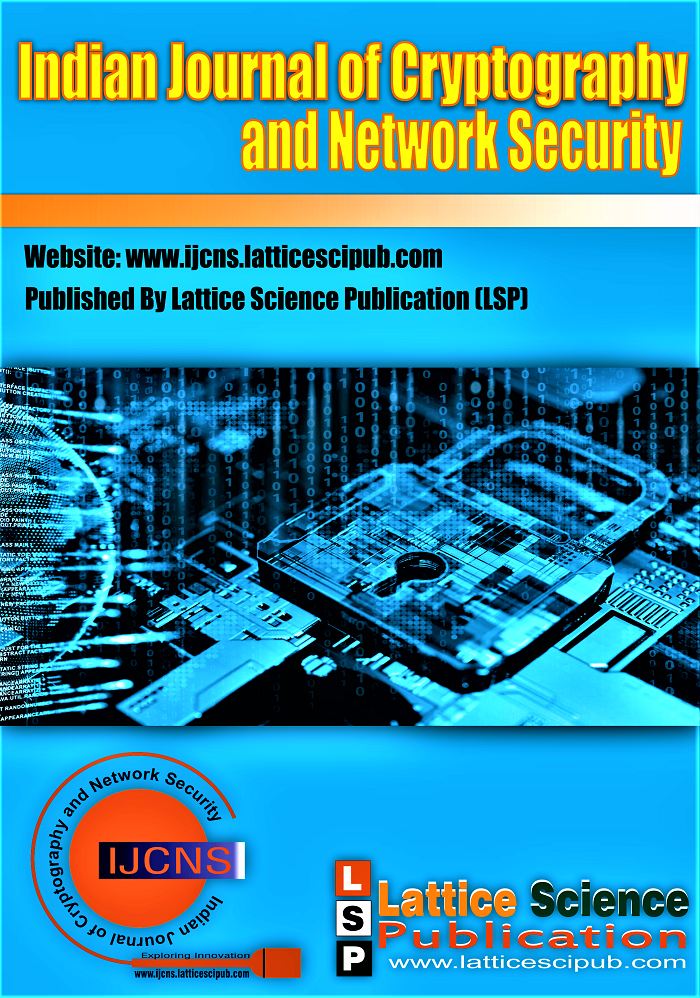IoT Sensor-Based Convolutional Neural Network System for Concealed Weapon Detector for Security Enhancement
Main Article Content
Abstract
Security has been a major concern in our societies due to the rise in crime rate, most especially in a crowded area. Concealed weapons have been posing a significant threat to government, law enforcement, security agencies, and civilians. Existing weapons detection systems seem to be not culpable of detecting concealed weapons without the cooperation of the person being searched. There remains a need for a weapons detector that can detect and identify concealed weapons for security enhancement in Nigeria. For this purpose, computer vision methods and a deep learning approach were applied for the identification of a weapon from captured images downloaded from the internet as a prototype for the study. Recent work in deep learning and machine learning using convolutional neural networks has shown considerable progress in the areas of object detection and recognition. The CNN algorithms are trained on the collected datasets to identify and differentiate between weapons and non-weapons. We built a concealed weapon detection system prototype and conducted a series of experiments to test the system's accuracy, precision, and false positives. The models were compared by evaluating their average values of sensitivity, specificity, F1 score, accuracy, and the area under the receiver operating characteristic curve (AUC). The experimental findings clearly demonstrated that the ResNet-50 model performed better than the VGG-16 and AlexNet models in terms of sensitivity, specificity, and accuracy.
Downloads
Article Details

This work is licensed under a Creative Commons Attribution-NonCommercial-NoDerivatives 4.0 International License.
How to Cite
References
Abdelmoamen, A., Member, A., & Echi, M. (2021). Hawk-Eye : An AI-Powered Threat Detector for Intelligent Surveillance Cameras. 1–12. DOI: https://doi.org/10.1109/ACCESS.2021.3074319
Adewumi, M. G., Adewale, O. S., Akinwumi, A. O., & Ajisola, K. T. (2022). Security Intelligence Framework for Suicide Bombers Identification in a Crowd. International Journal of Academic Research in Business and Social Sciences, 12(4), 697–706. DOI: https://doi.org/10.6007/ijarbss/v12-i4/13124
Albawi, S., & Mohammed, T. A. (2017). Understanding of a Convolutional Neural Network. April 2018. DOI: https://doi.org/10.1109/ICEngTechnol.2017.8308186
Al-shoukry, S. (2017). An Automatic Hybrid Approach to Detect Concealed objects. 12(16); 4736–4741. DOI: http://www.arpnjournals.org/jeas/research_papers/rp_2017/jeas_0817_6268.pdf
Bengio, Y., Lamblin, P., Popovici, D., and Larochelle, H., (2007). Greedy layer-wise training of deep Networks. In Neural Information Processing Systems. https://ieeexplore.ieee.org/document/6287632
Cai, W., Li, J., Xie, Z., Zhao, T., & Lu, K. (2018). Street object detection based on faster R-CNN. Chinese Control Conference, CCC, 2018-July (July 2018), 9500–9503. DOI: https://doi.org/10.23919/ChiCC.2018.8482613
Cotta, C. (2019). Metaheuristic approaches to the placement of suicide bomber detectors Metaheuristic Approaches to the Placement of Suicide Bomber Detectors. May 2018. DOI: https://doi.org/10.1007/s10732-017-9335-z
Dores, C., Reis, L., & Lopes, N. (2014). Internet of things and cloud computing. Information Systems and…, 6(2), 1–8. http://ieeexplore.ieee.org/xpls/abs_all.jsp?arnumber=6877071
Ezeah, E. C. I. and PC. (2015). Boko Haram Insurgency in Nigeria: A Public Perception Approach. Mgbakoigba, Journal of African Studies. 5(1); 1-16. https://www.researchgate.net/publication/337146610.
Felzenszwalb, P. F., and Huttenlocher, D. P. (2004). Efficient Graph-Based Image Segmentation. International Journal of Computer Vision, 59(2); 167–181. DOI: https://doi.org/10.1023/B:VISI.0000022288.19776.77
Ifeanyichukwu, F. (2019). Cultural Negligence as Key Cause of Terrorism in Nigeria: A Study. 9, 1–12. https://internationalpolicybrief.org/wp-content/uploads/2023/10/ARTICLE1-95.pdf
Meng, Z., Zhang, M. and Wang, H., (2020). CNN with pose segmentation for suspicious object detection in MMW security images. Sensor, 20, 4974, pp. 1 – 15. https://www.mdpi.com/1424-8220/20/17/4974
Minukas, J. B. M. (2010). Developing an Operational and Tactical Technologies to Produce the Highest Probability Methodology for Incorporating Existing of Detecting an Individual wearing an IED. https://core.ac.uk/download/pdf/36699007.pdf
Nalajala, P., Kumar, D. H, Harshavardhan, V. and Madhavi,
G. (2016). Intelligent Detection
of explosives using Wireless Sensor Network and Internet of Things (IOT), vol. 9, no. 42, pp. 391–397. https://serialsjournals.com/abstract/20865_cha-43.pdf
Rafi, U. (2016). An Efficient Convolutional Network for Human Pose Estimation. IEEE Journal of Computer Society, 10(6); 1002-1034. https://www.vision.rwth-aachen.de/media/papers/rafibmvc16.pdf
Saghiri, M. A., Lotfi, M., & Aghili, H. (2014). United States Patent U S. Patent. United States Patent US, 2(12), 0–10. http://www.google.ch/patents/US8 68770
Silas, A. (2013). The Effects of Boko Haram Insurgency and the School System ; A Case Study of Selected States in Northern Nigeria. DOI: https://doi.org/10.7237/sjsa/137
Srivastava, N., G. Hinton, A. Krizhevsky, I. Sutskever, R. Salakhutdinov.(2014). Dropout: A Simple Way to Prevent Neural Networks from Over fitting. Journal of Machine Learning Research. Vol. 15, pp. 1929-1958. https://jmlr.org/papers/volume15/srivastava14a/srivastava14a.pdf
Yang, J., and Yang, G. (2018). Modified convolutional neural network based on dropout and the stochastic gradient descent optimizer. Algorithms, 11(3); 1–15. DOI: https://doi.org/10.3390/a11030028
Das, S., S, S., M, A., & Jayaram, S. (2021). Deep Learning Convolutional Neural Network for Defect Identification and Classification in Woven Fabric. In Indian Journal of Artificial Intelligence and Neural Networking (Vol. 1, Issue 2, pp. 9–13). DOI: DOI: https://doi.org/10.54105/ijainn.b1011.041221
Jasmine, R. R., & Thyagharajan, K. K. (2019). Hand-Held Object with Action Recognition Based On Convolutional Neural Network in Spatio Temporal Domain. In International Journal of Engineering and Advanced Technology (Vol. 9, Issue 2, pp. 4968–4975). DOI: https://doi.org/10.35940/ijeat.a1901.129219
Cibi, Ms. A., & Rose, Dr. R. J. (2020). Convolutional Neural Network for Automated Analyzing of Medical Images. In International Journal of Innovative Technology and Exploring Engineering (Vol. 9, Issue 7, pp. 687–691). DOI: https://doi.org/10.35940/ijitee.g5629.059720
Morsy, H. A. M. (2023). Optimization Methods for Convolutional Neural Networks – The LeNet-5 Algorithm. In International Journal of Recent Technology and Engineering (IJRTE) (Vol. 11, Issue 5, pp. 1–4). DOI: https://doi.org/10.35940/ijrte.e7355.0111523
Raj, H., Duggal., A., M., A. K. S., Uppara, S., & S., S. M. (2020). Hand Motion Analysis using CNN. In International Journal of Soft Computing and Engineering (Vol. 9, Issue 6, pp. 26–30). DOI: https://doi.org/10.35940/ijsce.f3409.059620





